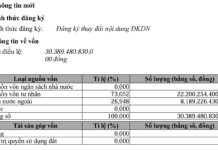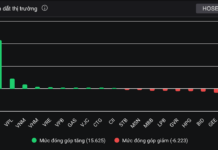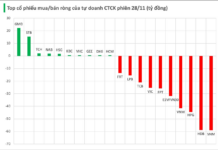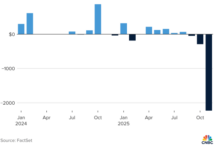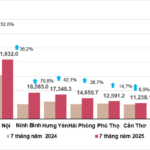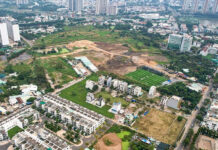A proposal was made during a conference held on August 8 to gather opinions from ministries, sectors, and northern provinces and cities on the draft Law amending and supplementing a number of articles of the Land Law.
At the conference, Ms. Trinh Thi Thu Huyen, Deputy Director of the Department of Agriculture and Environment of Lao Cai province, shared her thoughts on land use planning and management. She suggested that the land use planning at the communal level should be abolished, and only the five-year land use plan at the communal level should be implemented. This suggestion comes from the reality that in the past time, many cases have just completed the planning but then had to be adjusted.

Ms. Trinh Thi Thu Huyen, Deputy Director of the Department of Agriculture and Environment of Lao Cai province
According to Ms. Huyen, land use planning at the communal level should be combined with the formulation of a five-year land use plan, instead of being separated. This should be done every five years as very few land use plans remain unchanged over ten years. Even at the district, provincial, and national levels, reviews and adjustments are often made after five years. A five-year plan sufficiently reflects the targets and land use indicators for that period. When adjustments are needed, the process will be simpler, focusing only on indicator control.
Ms. Huyen provided an example: “This year’s target is 100 hectares of residential land, and the competent authority will decide on the specific location; or 100 hectares of land for other purposes, and the locality will proactively arrange and use it. This delegation of authority provides flexibility, especially when there are new investment projects or investors outside the budget. Currently, if there is a new project and the land use plan is not suitable, adjustments will be very difficult.”
“Although the targets set for the commune this year are not many, adjustments are still needed in the planning process and related planning. According to regulations, in places with new construction or adjustments, procedures will be simpler compared to adjusting existing land use planning,” said Ms. Huyen.
Taking into account Ms. Huyen’s opinion, Deputy Minister of Agriculture and Environment Le Minh Ngan stated: “This content has been discussed by the Central Executive Committee before. Resolution 18 clearly states that land use planning and plans must be made from the central to the grassroots levels. However, today’s conference will gather opinions from 15 northern provinces on the suggestion to make only a five-year land use plan at the communal level, without making a land use plan at the communal level.”
According to the voting results at the conference, 12 out of 15 provinces agreed with the proposal to abolish land use planning at the communal level, including Hanoi, Ninh Binh, Tuyen Quang, Lang Son, Quang Ninh, Bac Ninh, Cao Bang, Lao Cai, Lai Chau, Hai Phong, Son La, and Thai Nguyen. The three provinces with different opinions were Phu Tho (disagree), Hung Yen (no opinion), and Dien Bien (absent).
As the only locality agreeing with the proposal to make a land use plan at the communal level, Mr. Phan Trong Tan, Vice Chairman of Phu Tho People’s Committee, stated that land use planning at the communal level is still necessary.
“Previously, the land use planning and plans at the district level were often made annually, and now it is reasonable to move it to the communal level and extend it to five years. However, it needs to be accompanied by a flexible adjustment mechanism. In one year, many programs and projects arise that we cannot foresee. Therefore, timely adjustments should be allowed, even multiple adjustments if necessary, to suit the actual situation,” said Mr. Tan.
Article 66 of the draft amended Land Law proposes that the land use planning period at the communal level be 10 years, and the land use plan period at the communal level be 5 years.
At the same time, localities that have already had planning in accordance with the law on urban and rural planning are not required to make land use planning at the communal level. Instead, they can base on the approved planning, land use targets, and local demands to make a five-year land use plan at the communal level.
In case only a part of the planning has been completed according to the law on urban and rural planning, when making a land use plan at the communal level, it is necessary to update the orientations that have been determined in the commune’s general planning according to the land use planning period.
Reforming the Land Law: Multiple Localities Petition to Remove the Proposed Commune-Level Land-Use Planning Requirement
Are there any other adjustments you would like to make to this text?
“When providing feedback on the revised Land Law, several northern localities proposed removing the suggested period for communal-level land-use planning. They argued that instead of having a fixed planning period, it would be more efficient to implement a five-year communal land-use plan that can be adapted and adjusted as needed.”
Unlocking Public Investment Capital: Navigating Obstacles for Expedited Disbursement.
The Ministry of Finance has identified several bottlenecks hindering the progress of capital disbursement for public investment. These challenges primarily revolve around land clearance issues, shortages of construction materials, and delays in approval and adjustment of planning. To address these issues, the Ministry has proposed a range of pivotal solutions to expedite the capital disbursement process for public investment projects.
Breaking the 1.5 Million Billion Dong Mark: A Fiscal Year in Review
Let me know if you would like me to tweak it or provide additional suggestions!
The report by the Department of Statistics, Ministry of Finance, reveals that investment from the state budget has been prioritized by ministries, sectors, and localities. This has been particularly evident in the accelerated progress of large, key projects with far-reaching impact.
Unlocking Capital: Vietnam’s Public Investment Disbursement Reaches an Estimated VND 388 Trillion by July End
As of July 31, 2025, the Ministry of Finance estimates that disbursement since the beginning of the year stands at VND 388,301.15 billion, representing 39.45% of the plan and 43.9% of the plan assigned by the Prime Minister. This demonstrates a significant improvement compared to the same period in 2024, when disbursement reached only 27.76% and 33.8% of the respective plans.












